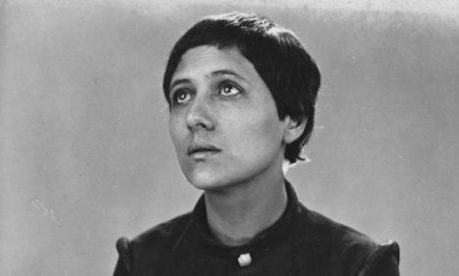Joan of Arc was burned at the stake in 1431. She was canonized in 1920. Eight years later, and almost 600 years after her death, she was immortalized on screen in Carl Dreyer’s The Passion of Joan of Arc.
Soon after its completion, however, the original film “disappeared” on account of fire. Painstakingly, the director recreated it again from outtakes, but shortly afterwards, that negative too was obliterated in yet another fire.
Only a few years after its release, it seemed as if the film was lost forever, and just at a time when the now-Saint Joan was being re-introduced to the world. That was not the end of the matter, though. The flickering images were to return mysteriously from the flames, like the saint herself, and in circumstances no one could have imagined.
The canonization of St. Joan of Arc in 1920 was followed a year later by the publication of the transcripts of her trial. At the same time, one of the most promising young directors in Europe, Carl Dreyer, was invited to France to make a film. It was to be on any subject of his choosing.
The Danish director said that, at the time, he was considering as subject matter the lives of three French women. He devised a way of choosing which of these women’s lives to turn into a film. Ironically, it was from the drawing of matches that the Maid of Orleans emerged as his subject.
Needless to say, the director’s imagination was immediately ignited and for the next 18 months he set about researching all he could find on the life of the peasant girl from Domrémy. He could not have known then just how much, both artistically and personally, this film would cost him. Continue reading
Sources
- The Catholic World Report, the beginning of an article by K.V. Turley, a London-based freelance writer and filmmaker with a degree in theology from the Maryvale Institute.
- Image: A Cinematic Odyssey
News category: Features.




